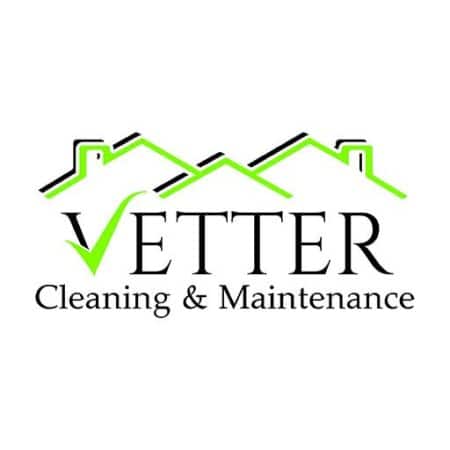Gnats can turn your cozy haven into an annoyance, buzzing around your face and food. These pesky little creatures seem to appear out of nowhere, multiplying faster than you can swat them away. But don’t worry, you’re not alone in this fight. With the right tools and techniques, you can send them packing for good. Imagine a home free from the constant bother of gnats, where you can finally relax and enjoy your space. Let’s dive into the nitty-gritty of saying goodbye to these tiny invaders once and for all.
Have you ever wondered why gnats seem to invade your home out of the blue and what you can do to get rid of them for good?
Key Takeaways
- Discover effective DIY traps using apple cider vinegar and wine to lure gnats
- Learn how to set up vinegar traps with household items
- Utilize fly paper for a chemical-free solution to catch gnats
- Understand the importance of cleaning drains to prevent infestations
- Explore the use of boiling water and diluted bleach for effective gnat removal
Using Apple Cider Vinegar Trap
Apple cider vinegar is more than just a kitchen staple. It’s a potent tool in your arsenal against gnats. These tiny pests are attracted to the vinegar’s sweet smell, mistaking it for fermenting fruit. By setting up a simple vinegar trap, you can lure them in and eliminate them effectively. This method is not only economical but also natural, avoiding the use of harsh chemicals that can harm your home environment.
To create an apple cider vinegar trap, begin by selecting a small bowl or container that’s easy to place around your home. Pour in enough apple cider vinegar to cover the bottom, about an inch deep. The aroma will draw gnats in, thinking they’ve found a feast. This DIY trap is an excellent way to reduce the gnat population significantly.
Now, let’s enhance the effectiveness of this trap. Adding a few drops of dish soap breaks the vinegar’s surface tension, causing gnats to sink and drown. This small tweak transforms your vinegar trap into a more lethal tool against these flying nuisances. You’ll find gnats meeting their demise, unable to escape.
Place the vinegar traps strategically around your home, especially in areas where gnats are prevalent. Kitchens, near fruit bowls, and trash cans are prime spots. The beauty of this method is its simplicity and effectiveness, making it a must-try for anyone dealing with a gnat infestation.
Setting Up a Vinegar Trap
Setting up a vinegar trap is an easy task that can make a world of difference. A small bowl serves as the perfect vessel to hold your apple cider vinegar, acting as a beacon for those pesky gnats. With just a few household items, you can create a trap that’ll have the gnats flocking to it like bees to honey.
Begin by securing the bowl with a layer of plastic wrap. This step is crucial as it contains the vinegar’s smell while allowing gnats to enter. Next, use a toothpick or a fork to poke a few small holes in the plastic wrap. These tiny openings are inviting gateways for gnats, lured by the enticing scent of apple cider vinegar.
The beauty of this setup lies in its simplicity. The plastic wrap keeps the gnats trapped inside, unable to escape once they’ve entered. For an added punch, drop a few dabs of dish soap into the vinegar. This addition ensures that when gnats land, they won’t have a chance to fly away, making your trap even more effective.
Place these traps in strategic locations around your home. Think about where gnats are most likely to gather. Kitchens, bathrooms, and near houseplants are ideal spots. By targeting these hotspots, you’ll be well on your way to eliminating these pests from your living space.
Utilizing Fly Paper
Fly paper might seem old-fashioned, but it’s a tried-and-true method for capturing gnats and other flying insects. This sticky paper is a simple yet effective solution that doesn’t require chemicals or complex setups. Plus, its bright colors are designed to attract gnats, making it an effective addition to your pest control strategy.
The key to using fly paper effectively is placement. Hang strips near gnat hotspots like fruit bowls, garbage bins, and windows. These are the places where gnats gather, and by placing fly paper there, you increase your chances of catching them. The sticky surface ensures that once a gnat lands, it won’t get away.
Fly paper offers a chemical-free solution, making it safe for use around children and pets. It provides peace of mind knowing you’re not introducing harmful substances into your home. Plus, it’s easy to use and dispose of, making it a convenient option for busy households.
Consider using fly paper in conjunction with other methods, like vinegar traps, for a comprehensive approach. This multi-pronged strategy will tackle gnats from all angles, reducing their numbers quickly and effectively. You’ll soon find yourself enjoying a gnat-free home, thanks to the humble yet mighty fly paper.
Wine Trap for Gnats
If you have leftover wine, don’t pour it down the drain just yet. It can serve as an excellent bait for gnats. Like apple cider vinegar, wine’s aroma lures gnats in, making it an effective trap. With just a few simple steps, you can create a wine trap that will help you reclaim your space from these unwelcome guests.
Start by selecting a shallow dish to hold the wine. The shallow depth allows gnats easy access, increasing the trap’s efficacy. Pour a small amount of red wine into the dish. Red wine’s aroma is particularly enticing to gnats, drawing them in with its rich, fruity scent.
Cover the dish with plastic wrap, securing it tightly around the edges. Use a toothpick to poke small holes in the wrap, creating entry points for the gnats. Once inside, they’ll be unable to escape, thanks to the wrap’s barrier.
Wine traps are a simple, natural solution to your gnat problem. Plus, they offer a great way to use up leftover wine. By strategically placing these traps around your home, you’ll be able to target gnats effectively, reducing their presence significantly.
Cleaning Drains to Prevent Gnat Infestations
Gnats often lay their eggs in drains, making regular cleaning essential to prevent infestations. By keeping your drains clean, you eliminate a significant breeding ground for these pests. Not only does this reduce current gnat populations, but it also helps prevent future infestations.
Start by using a brush to scrub away any gnat eggs and residue clinging to the sides of your drains. This physical action dislodges potential breeding sites, making your home less attractive to gnats. For an extra boost, mix baking soda with vinegar to create a natural cleaning solution. This combination bubbles and fizzes, breaking down grime and killing gnat eggs on contact.
Flush the drains with hot water to wash away any remaining debris and larvae. This step ensures that no gnats can thrive in your plumbing. Regular drain cleaning is a simple yet powerful tool in your fight against gnats, keeping your home fresh and pest-free.
By incorporating drain cleaning into your routine, you are taking proactive steps to prevent gnat infestations. This home improvement task doesn’t just target gnats but also contributes to overall household cleanliness, making it a win-win situation.
Eliminating Gnats with Diluted Bleach
For a powerful solution to gnat infestations, look no further than diluted bleach. This cleaning product is effective at killing gnat larvae in drains, stopping the problem at its source. By incorporating bleach into your routine, you can keep your home gnat-free with minimal effort.
Start by pouring a cup of bleach down the affected drains. This step delivers a concentrated dose of bleach directly to the problem area, ensuring that no larvae can survive. Follow up with running water to rinse away the bleach and any dislodged debris. This action clears the drain, leaving it clean and uninhabitable for gnats.
Regular bleach treatments are an excellent prevention method, keeping your home free of gnats. By maintaining a consistent schedule, you ensure that gnats don’t have a chance to breed and multiply. This proactive approach is key to long-term gnat control, providing peace of mind for homeowners.
While bleach is an effective solution, it’s important to handle it with care. Always follow the instructions on the label and use gloves to protect your skin. By using bleach responsibly, you can eliminate gnats safely and effectively, reclaiming your home from these pesky pests.
Boiling Water Method for Gnat Removal
Boiling water is a simple, chemical-free method for removing gnats from your drains. It’s an accessible option for anyone seeking a natural alternative to commercial cleaning products. By using boiling water, you can effectively kill gnat eggs and larvae, preventing them from taking over your home.
Heat water in a kettle until it reaches a rolling boil. This ensures that the water is hot enough to kill any gnat eggs or larvae hiding in your drains. Pour the boiling water directly down the drain, allowing it to flow through the pipes and flush out any pests.
Regularly using boiling water as part of your routine maintenance can prevent infestations before they start. By making this a habit, you keep your drains clean and free from gnats, creating a more pleasant living environment.
This method is not only effective but also environmentally friendly. It doesn’t introduce any chemicals into your home, making it safe for families and pets. By opting for boiling water, you’re choosing a method that’s both practical and sustainable, helping you maintain a gnat-free home with ease.
Conclusion
Tackling a gnat infestation might seem like a daunting task, but armed with the right knowledge and tools, you can reclaim your home from these pesky invaders. From setting up DIY traps with apple cider vinegar and wine to utilizing fly paper and cleaning drains, there are numerous natural and effective methods at your disposal. Whether you choose to use diluted bleach or the boiling water method, each strategy offers a unique way to eliminate gnats and prevent future infestations.
About The Author
Vetter Cleaning & Maintenance in Colorado Springs, CO offers a variety of residential cleaning services to meet most home cleaning needs, including recurring housekeeping services, deep house cleaning services, and move-in/out cleaning services.
If you live in the Colorado Springs area, we invite you to request a free home cleaning quote.
See us on Google Maps.

